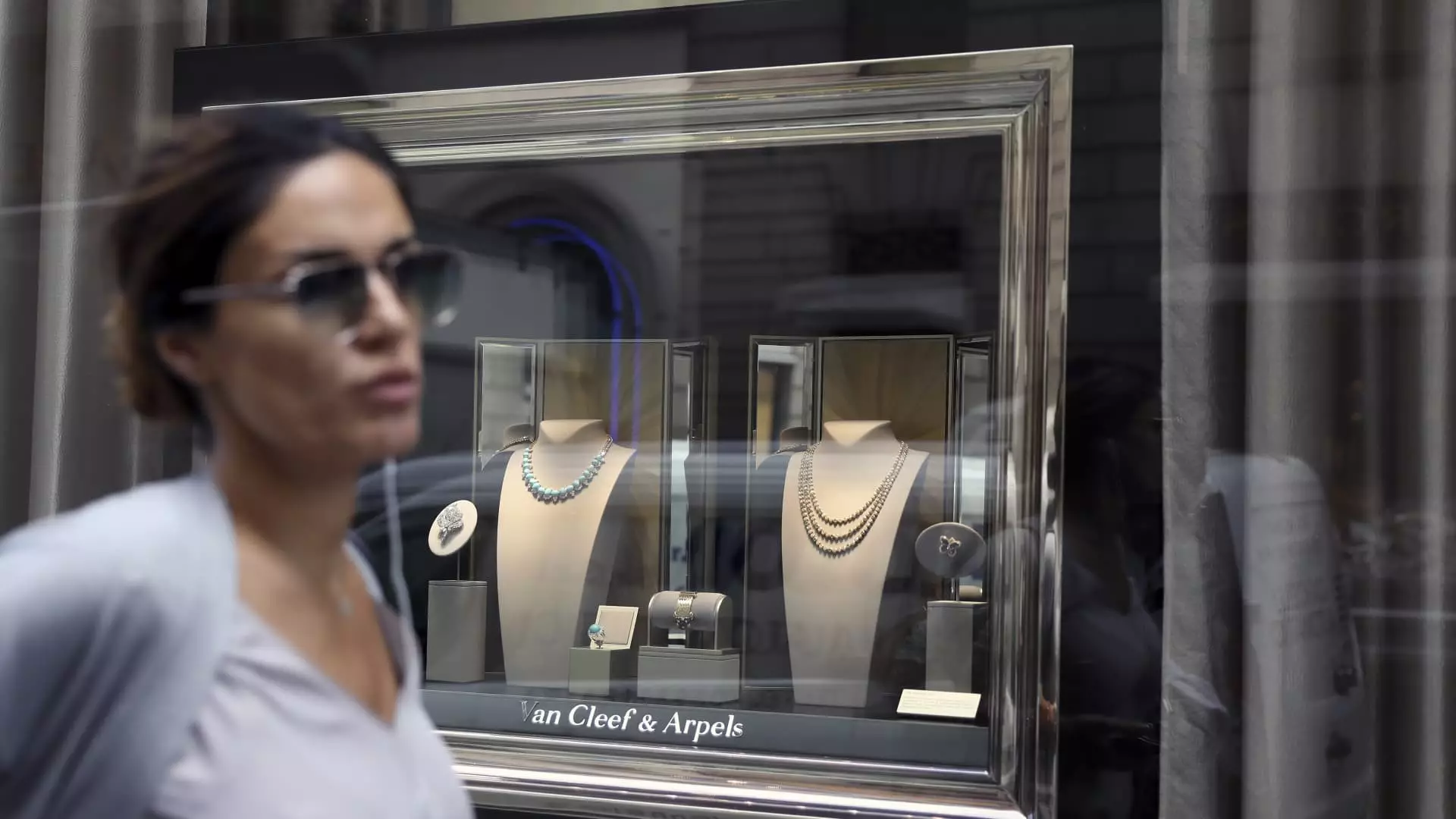As the global economy stumbles through uncertainty, the stark divide between the ultra-wealthy and the average consumer grows increasingly pronounced. While the elite continue to capriciously indulge in spectacular displays of affluence—be it diamond-encrusted rings or exquisite gemstone necklaces—the rest of society grapples with tightening budgets and diminished spending power. This facade of opulence presents a complex narrative, one in which the luxury market is denying the broader economic malaise at hand. The flying colors of the luxury industry cannot mask the clouds gathering over the economy, revealing a troubling trend where the rich float above the fray while average consumers are forced to pull back and scrutinize their spending habits.
The Crystal Ball: Richemont’s Bloom Amidst a Gloomy Landscape
Enter Swiss luxury group Richemont, shining like a diamond in a coal mine, reporting robust growth within its esteemed jewelry segment. This is a beacon of hope, a testimony to the allure that high-end jewelry maintains even amidst a downturn in broader luxury. Brands such as Van Cleef & Arpels and Cartier have not only held their ground but also enhanced consumer desirability according to industry leaders like Luca Solca of Bernstein. Contrastingly, the wider luxury sector saw a declining trend with stalwarts like LVMH and Kering reporting loss in sales, thus painting a picture of a selective market where only the top-tier brands are insulated from the prevailing economic chill.
Richemont’s ability to generate an impressive 11% growth for its Jewelry Maisons division suggests that affluent consumers are gravitating further towards quality and exclusivity. However, this situation raises an uncomfortable question about the sustainability of such growth. Is luxury merely floating on the surface of a looming crisis? The company’s resilience may provide a temporary façade, but it also begs scrutiny of the societal factors enabling such disparity in wealth and consumption patterns.
The Watch Market: Stagnation or a Temporary Blip?
Beyond the glimmering jewels, Richemont’s performance in the watch market tells an entirely different story. With a staggering 13% decline in watch sales for 2024, attributed primarily to dwindling demand in China, one must confront the bitter reality that some sectors of luxury are experiencing serious turbulence. The lure of a luxury watch as a “lifetime purchase” may no longer hold sway as consumers recalibrate their purchasing behavior. This trend illustrates a shifting paradigm where immediate gratification, embodied in the spontaneous purchase of jewelry, is eclipsing the painstaking consideration attached to watch acquisitions.
It does not help that many premium Swiss watchmakers, shrouded in secrecy due to private ownership, complicate any broader analysis into the market’s health. This obfuscation raises concerns about the future viability of these timepieces as a sustainable luxury commodity in a marketplace wrought with uncertainty. “Everybody and their dog has bought a watch out of Covid-19 and that will take a while to digest,” notes Solca, and one cannot help but question how long it will take for this market to regain momentum.
The Strangled Growth of Jewelry Balances on a Knife’s Edge
The jewelry sector may appear buoyant, but analysts remain cautious, hinting at multiple headwinds that threaten to undermine Richemont’s glittering success. The formidable strength of the Swiss franc against the dollar, escalating gold prices, and unpredictable tariff impacts do not bode well for a domain so intricately linked to consumer sentiment. What happens when the allure of luxury jewelry begins to tarnish under economic pressures? Would Pierre and Penelope plan their purchases in a different light when faced with these mounting costs?
Richemont’s decision to forgo unsustainable price increases reflects a nuanced understanding of market dynamics, but there’s an underlying tension regarding the balance of luxury and affordability. As opulence grapples with the impact of economic pressures, Richemont’s dependence on its jewelry segment becomes both a blessing and a vulnerability. If economic conditions worsen, will Richemont be able to maintain its elevated position without resorting to market traps that could tarnish its prestigious brand reputation?
Concluding Thoughts: The Paradox of Luxe Living
In a world where the rich are seemingly sealed off from the realities faced by the majority, the luxury market stands at a crossroad. Brands like Richemont may withstand the storm with their high-demand luxury offerings, but the widening wealth gap and economic hardships challenge the very fabric of sustainable luxury consumption. The world watches to see not just the successes of elite brands but also how the fallout from this dichotomy of wealth will evolve in the coming years. Will luxury redefine itself to become more inclusive, or will it remain an exclusive club? Only time will tell, but one thing is certain—the ongoing drama in the world of luxury is worth watching.

